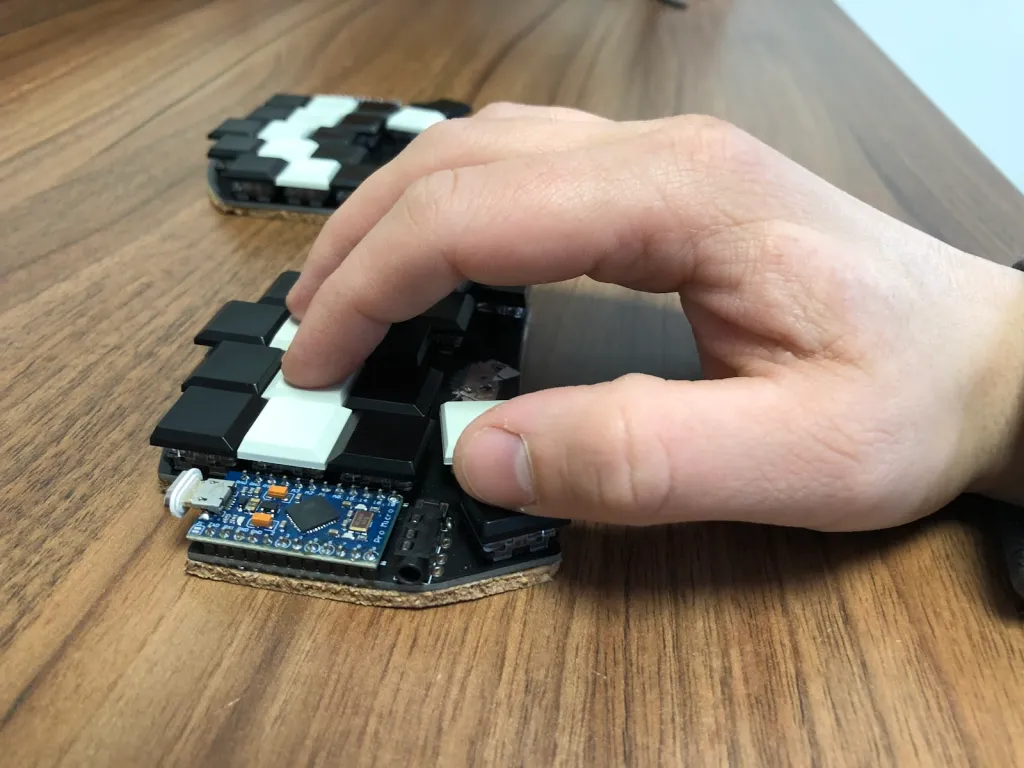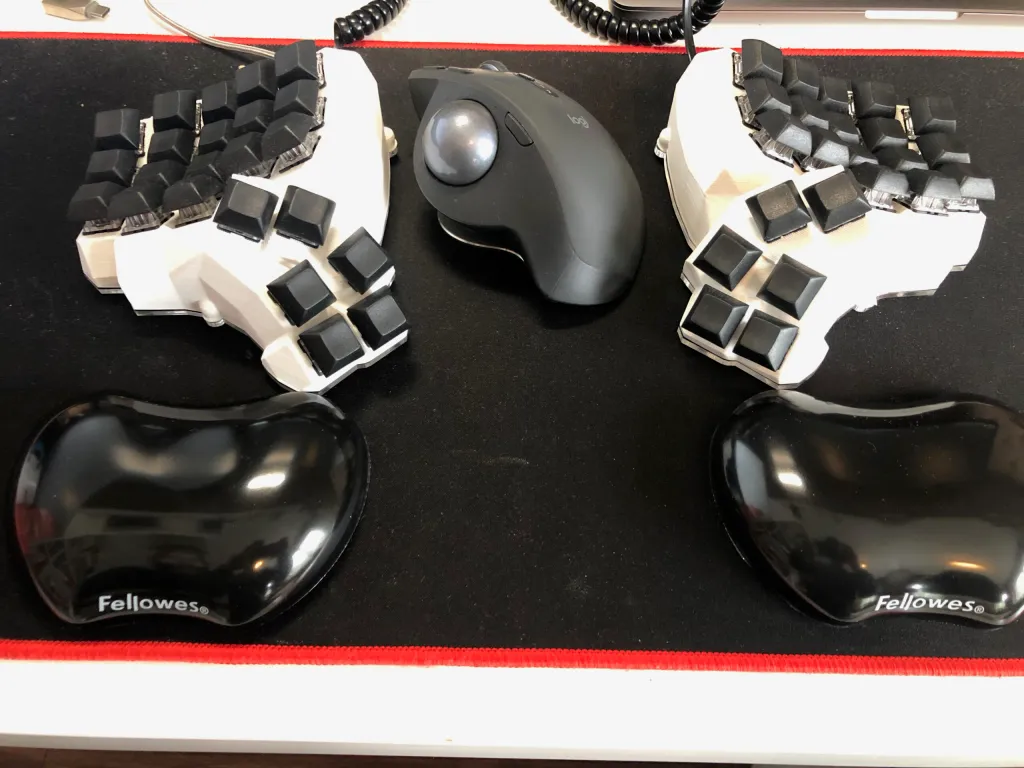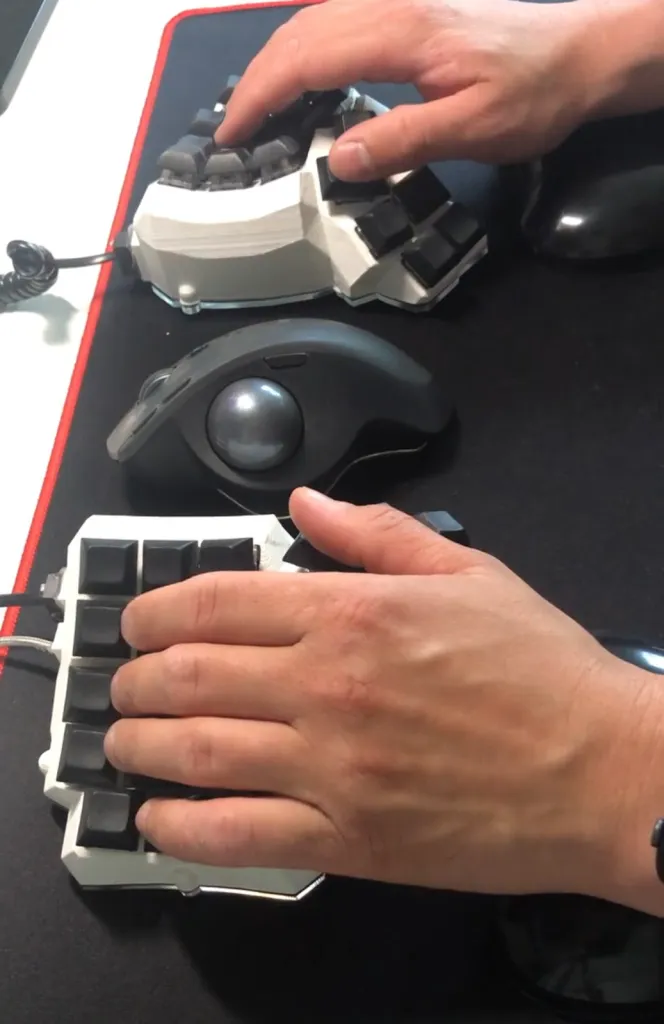Wrist rests are one of the most debated accessories in the world of mechanical and ergonomic keyboards. Some people swear by them, claiming they reduce strain and improve comfort. Others argue they create bad habits, pressing your wrists into hard surfaces and potentially leading to injuries.
So, what’s the truth? Do you actually need wrist rests for your keyboard setup? The answer, as with many things in ergonomics, is: it depends.
In this article, we’ll explore the role of wrist rests, their benefits and risks, and how they work with split keyboards like the Ferris Sweep or Dactyl Manuform. You’ll also learn when wrist rests are essential and when you should skip them.
Why Wrist Position Matters
When typing, your goal should be to keep your wrists neutral - not bent up, down, or sideways. Proper wrist alignment reduces pressure on tendons and nerves, lowering the risk of carpal tunnel syndrome and RSI (Repetitive Strain Injury).
A good ergonomic setup prioritizes:
- Neutral wrist posture (straight, not flexed or extended)
- Elbows at 90° or slightly open
- Shoulders relaxed
- Keyboard at the right height relative to your desk and chair
Wrist rests can either support this posture or encourage bad habits, depending on how you use them.
The Benefits of Wrist Rests
Wrist rests can be very helpful in the right context. Here are the main benefits:
Reducing Hard Surface Contact
Typing with your palms or wrists resting directly on a desk edge can cause compression and irritation. A soft wrist rest prevents sharp pressure on sensitive areas.Maintaining Forearm Alignment
When properly sized, wrist rests help align your forearms and wrists, reducing awkward extension (bending upward).Comfort During Pauses
Many users don’t type continuously. A wrist rest provides a comfortable place to relax your hands during breaks, instead of resting on the desk edge.Compatibility with High Keyboards
Mechanical keyboards, especially with tall keycaps, raise your hands above the desk. Wrist rests bring your palms closer to the key height, reducing strain.

The Risks of Wrist Rests
While wrist rests have benefits, they can also introduce problems:
Encouraging Static Wrist Pressure
If you keep your wrists glued to the rest while typing, you may compress nerves and blood vessels, leading to discomfort.Blocking Natural Movement
Typing ergonomically often means moving your arms and hands slightly, not just your fingers. Over-reliance on a wrist rest can reduce mobility.Wrong Height or Angle
A wrist rest that’s too tall or too short can actually worsen posture, bending your wrists upward or downward.
The key is to use wrist rests for support between typing, not as a constant anchor while pressing keys.
Wrist Rests and Split Keyboards
With ergonomic split keyboards, the role of wrist rests changes dramatically.
Take the Ferris Sweep for example:

This ultra-compact split keyboard has a low profile and flat case. For many users, it doesn’t need wrist rests at all-placing it flat on the desk already allows for neutral wrists.
On the other hand, the Dactyl Manuform is a tall, tented keyboard with sculpted key wells:

Here, wrist rests are almost essential. Without them, your palms would hover uncomfortably above the desk. Proper rests elevate your hands, keeping your wrists straight.
From the side, you can see how the rests align the wrist angle:

This makes typing smoother and more sustainable for long sessions.
Different Types of Wrist Rests
Wrist rests come in different materials and designs. Choosing the right one depends on your keyboard and personal preference.
Foam Wrist Rests
Soft and affordable, but they may compress over time.Gel Wrist Rests
Provide cushioning and contouring, but can get sticky or hot.Wooden Wrist Rests
Harder, but durable and aesthetically pleasing. They work well for mechanical keyboards.3D-Printed Wrist Rests
Popular in the ergonomic community for custom keyboards like the Dactyl Manuform.Integrated Wrist Rests
Some keyboards include built-in rests, though these often don’t fit everyone’s anatomy.
Best Practices for Using Wrist Rests
To get the most ergonomic benefit while avoiding risks:
Float Your Wrists While Typing
Don’t press down continuously. Instead, let your hands hover above the keys and use the wrist rest for pauses.Match the Height
Your wrist rest should be about the same height as the front of your keyboard.Choose the Right Material
Pick a rest that feels supportive without being too hard or too soft.Keep the Keyboard Low
If possible, place your keyboard at elbow height or lower. This reduces the need for wrist rests entirely.
When You Should Skip Wrist Rests
In some cases, you don’t need wrist rests at all:
- If you use a low-profile split keyboard like the Ferris Sweep
- If your desk height is already ergonomically optimized
- If you type with a floating wrist posture comfortably
Adding a wrist rest in these scenarios may just take up space without adding comfort.
Final Thoughts
Wrist rests are neither a magic solution nor a universal problem. They’re a tool-helpful when matched to the right keyboard, typing style, and posture.
- For low-profile keyboards (like the Ferris Sweep), you may not need them.
- For taller sculpted keyboards (like the Dactyl Manuform), they’re almost essential.
- Always use them as a resting surface between typing, not a permanent anchor.
If you’re setting up an ergonomic workstation, experiment with and without wrist rests. Pay attention to how your wrists feel after long typing sessions. The best solution is the one that keeps you comfortable and healthy in the long run.
